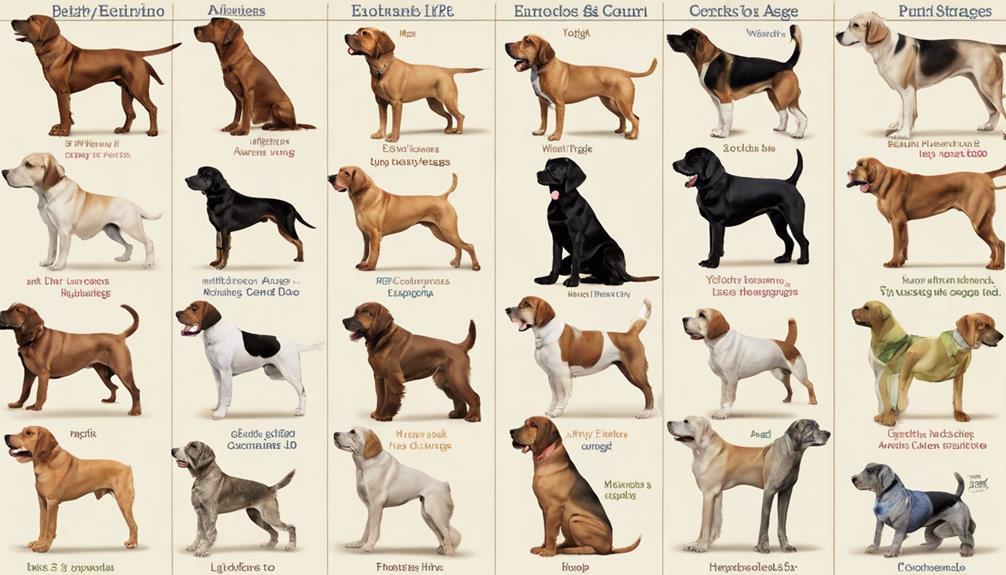Counting fleas on your dog requires considering factors like the host's age, grooming habits, and immune system. Fleas are commonly found at the tail base, behind ears, belly, and armpits. Use flea combing by starting at the neck, dipping in soapy water, and checking for fleas, eggs, or dirt. Spot flea droppings as dark specks or wet reddish specks. Regular checks prevent infestations, maintaining pet health and home cleanliness. Flea population thresholds range from <20 to >150, determining treatment needs. Seek professional help for effective control. Signs of infestation include scratching, red skin, and flea dirt. Follow prevention tips for a flea-free pet. More tips ahead!
Key Takeaways
- Flea populations can range from a few to 300 on a dog.
- Dogs with under 20 fleas are usually infested.
- High flea burdens (>150) need immediate attention.
- Younger pets may have more fleas due to grooming and immunity.
- Severity determines treatment measures for flea infestations.
Factors Affecting Flea Count
When tallying the number of fleas on your dog, it's important to take into account the different factors that influence flea count. The age of the host plays a significant role in determining the flea burden. Younger animals tend to have a higher flea population due to grooming habits and variances in their immune systems. Understanding this relationship can aid in managing flea infestations effectively.
Various studies have shown differing infestation levels, with statistics like 164 out of 200 stray cats and 323 out of 701 domestic cats being infested in different regions. Fleas rarely abandon their host, even at high population levels. A burden of over 200 fleas is considered rare, while 150 fleas are deemed high. On average, dogs or cats may carry less than 20 fleas, representing the flea count on the animal.
Common Areas for Fleas on Dogs

Fleas on dogs commonly inhabit areas such as the base of the tail, behind the ears, on the belly, around the neck, and in armpits. They're pesky little parasites that thrive in warm, moist environments within the dense fur of our furry friends.
Here are some common areas where you might find these troublesome critters:
- Base of the tail
- Behind the ears
- Belly
- Armpits
- Hind legs
Fleas also have a knack for sneaking onto the hind legs, around the anus, and between the toes of dogs. These areas provide fleas easy access to blood meals and protection from grooming behaviors. Regularly checking these spots can help you catch fleas early, preventing a full-blown infestation. Remember, keeping an eye on these common flea hangouts is key to maintaining your dog's health and comfort.
Techniques for Flea Detection

When it comes to detecting fleas on your dog, there are a few key techniques to keep in mind.
Using a flea comb can help you catch any fleas or flea dirt lurking in your dog's fur. Additionally, keep an eye out for tiny, dark insects scurrying about or clusters of dark specks that could be flea droppings.
Flea Combing Methods
Utilizing a fine-toothed comb during flea combing sessions allows for the effective detection of fleas and flea dirt on your dog's fur. When conducting flea combing, start from the neck down to the tail, paying close attention to areas like the head, neck, back, and tail base where fleas tend to hide. Remember to dip the comb in soapy water after each stroke to drown any collected fleas or flea dirt.
Keep an eye out for live fleas, flea eggs, or flea dirt on the comb, which may look like small black specks or turn red when wet. Regular flea combing helps monitor flea infestations and assess the success of flea control measures.
- Start combing from the neck down to the tail
- Dip the comb in soapy water after each stroke
- Look for live fleas, flea eggs, or flea dirt on the comb
- Focus on areas where fleas commonly hide
- Regular flea combing helps monitor flea infestations and assess flea control measures
Spotting Flea Droppings
Spotting flea droppings on your dog's skin is essential for early detection of flea infestations. Flea dirt, also known as flea droppings, appears as dark specks on your dog's skin and can be mistaken for dirt.
However, when wet, these droppings take on a reddish color, distinguishing them from regular debris. You're likely to find flea dirt in areas with thick fur, such as around the neck or base of the tail.
Detecting flea dirt and eggs can help determine if your dog has fleas. Regularly checking for these signs is critical for maintaining your pet's health and preventing flea infestations.
Importance of Regular Flea Checks

Regularly checking your dog for fleas is vital to safeguard their well-being and prevent potential infestations. Fleas multiply quickly, so it's important to conduct regular checks to catch any issues early. By establishing a routine for flea inspections, you can guarantee a healthy environment for your furry friend. Here are some key reasons why regular flea checks are significant:
- Early Detection: Regular checks help in the early detection of fleas, preventing discomfort for your dog and potential health problems.
- Prevent Infestations: Monitoring your dog consistently can help prevent flea infestations, keeping your pet happy and healthy.
- Maintain Dog Health: Regular flea checks contribute to maintaining your dog's overall health and well-being.
- Healthy Environment: By keeping your dog flea-free, you create a healthier living environment for both your pet and your family.
- Identify Flea Dirt: Through regular inspections, you can spot flea dirt, eggs, or live fleas, taking necessary actions promptly.
Understanding Flea Infestation Levels

When evaluating flea infestation levels on your pet, it's important to understand the population thresholds these pests can reach. This understanding helps in identifying the severity of the infestation. Recognizing the difference between low, moderate, and high flea burdens will guide you in choosing effective treatment strategies.
Flea Population Thresholds
Understanding flea infestation levels involves recognizing the threshold at which a pet can support a maximum of 200 to 300 fleas without them jumping off. Here are some key points to take into account:
- Infested cats and dogs usually have fewer than 20 fleas, with the average flea burden being under 20.
- Pets can carry up to 300 fleas without the fleas abandoning them, even at high populations.
- Fleas show strong attachment to their hosts, not leaving even when their population exceeds 300.
- A burden of over 200 fleas is uncommon, with 150 fleas seen as a high number on a single animal.
- Younger animals tend to have more fleas due to grooming habits and differences in their immune systems.
Identifying Infestation Severity
Moving from discussing the flea population thresholds, we now shift our focus to identifying infestation severity by understanding flea infestation levels. Flea infestation levels are important in determining the severity of the situation.
A low flea burden, with less than 20 fleas on your pet, is manageable. However, a high population of 150 or more fleas requires immediate attention. In rare cases, pets can host up to 200 to 300 fleas.
Recognizing the severity of flea infestation levels is essential for choosing the right treatment and prevention methods. By identifying the flea burden on your pet, you can take necessary steps to address the infestation effectively and protect both your furry friend and your home.
Effective Treatment Strategies
To effectively address flea infestation levels, we prioritize understanding the severity to tailor treatment strategies appropriately.
- Low Flea Burden: Less than 20 fleas on a pet, usually manageable with basic treatments like baths and grooming.
- Moderate Flea Burden: Between 20 and 150 fleas, may require topical treatments or oral medications prescribed by a veterinarian.
- High Burden of Fleas: Exceeding 150 fleas, necessitating immediate and aggressive flea treatment to prevent health issues.
- Severe Infestation: 200 or more fleas, posing significant risks to the pet's well-being and requiring thorough environmental treatment.
- Flea Treatment Strategies: Vary based on the flea burden, including spot-on treatments, oral medications, flea collars, and environmental control measures.
Seeking Professional Help for Flea Control

When home remedies and over-the-counter products fail to eliminate fleas on your dog, seeking professional help for flea control becomes crucial. Veterinarians are equipped to provide prescription flea treatments tailored to your dog's specific needs. By consulting with a professional, you can determine the severity of the flea infestation and decide on the best course of action.
Professional flea control services offer long-term solutions to prevent future infestations. This approach guarantees that the flea control measures implemented are safe and effective for your dog. Remember, the health and well-being of your furry friend are a top priority, and professional help can make a significant difference in tackling a stubborn flea problem.
Don't hesitate to reach out to a vet or a professional flea control service if you find yourself overwhelmed by the situation. They've the expertise and resources to assist you in providing the best care for your dog.
Frequently Asked Questions
How Many Fleas Are Usually on a Dog?
We usually find less than 20 fleas on a dog, known as the flea burden. Dogs and cats can host up to 200 to 300 fleas, with rare instances of populations exceeding 300. Fleas tend to stick with their host even at high numbers.
Younger animals tend to attract more fleas due to grooming habits and immune system variances. Studies show varied infestation rates, with some reports showing high numbers like 164 out of 200 stray cats having fleas.
What to Do if You Find 3 Fleas on Your Dog?
If we find 3 fleas on your dog, it's important to act swiftly. Even a single female flea can lay up to 50 eggs daily, leading to a potential infestation. Immediate flea treatment is essential to prevent the situation from escalating.
Regular grooming, vacuuming, and washing your dog's bedding can help manage the flea population. Consult your vet for effective flea treatment options to keep your furry friend and home free from fleas.
When You Find One Flea Is There More?
When we find one flea on our dog, there's a high likelihood of more fleas being present.
Fleas reproduce quickly, with each female laying many eggs daily.
To prevent a potential infestation, it's vital to thoroughly check our dog and the surrounding environment.
Immediate action is necessary as one flea often indicates the presence of more that may need treatment.
How Many Times Should You Flea Your Dog?
We flea our dog based on individual needs, consulting our vet for guidance. Tailoring treatments to our dog's environment is important to keeping them flea-free.
Some dogs may need monthly flea treatments, while others can go longer between doses. By staying proactive and observant, we can adjust our flea control regimen accordingly.
Trusting our vet's advice guarantees our furry friend stays happy and healthy year-round.
Conclusion
To sum up, counting fleas on your dog is a crucial task that can help prevent infestations and keep your furry friend healthy.
By regularly checking common areas for fleas and using proper detection techniques, you can guarantee early intervention and control.
Remember, seeking professional help for flea control is essential in managing infestation levels and maintaining a flea-free environment for both your pet and your family.
Stay vigilant and proactive in keeping your dog flea-free!










